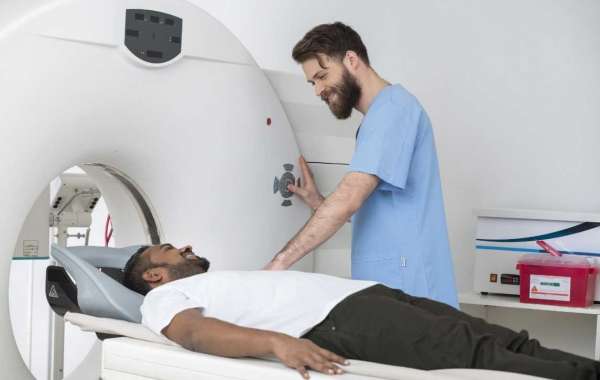Introduction
In the world of medical imaging, Magnetic Resonance Imaging (MRI) has become an indispensable tool for healthcare professionals. GE Healthcare, one of the leading manufacturers in the field, has a long history of innovation in MRI technology. Over the years, GE MRI scanners have continually evolved, pushing the boundaries of imaging quality, speed, and patient comfort. As we step into 2023, this article explores the evolution of GE MRI scanners, highlighting the latest advancements and innovations that set these machines apart. Whether you are a healthcare administrator considering an investment or a clinician seeking the best diagnostic tools, understanding the state of GE MRI technology is crucial.
The Journey of GE MRI Scanners
The journey of GE MRI scanners has been marked by consistent innovation and technological advancements. Let's take a closer look at key milestones in the evolution of GE MRI scanners:
1. Introduction of the First MRI Scanner (1980s): The 1980s marked the emergence of MRI technology, and GE Healthcare was at the forefront. GE introduced its first MRI scanner, the Signa, which quickly gained recognition for its image quality and performance.
2. Development of High-Field MRI (1990s): In the 1990s, GE Healthcare introduced high-field MRI scanners, such as the Signa Horizon, operating at 1.5 Tesla (1.5T). These systems offered improved image quality and became widely adopted for various clinical applications.
3. Introduction of 3 Tesla (3T) Scanners (2000s): The 3T era began with GE's Signa Excite 3T scanner, providing even higher image resolution and signal strength. 3T scanners became essential for advanced imaging, including neuroimaging and cardiac imaging.
4. Focus on Speed and Efficiency (2010s): The 2010s witnessed a shift toward faster and more efficient MRI scanning. GE Healthcare introduced technologies like Silent Scan for quieter exams and techniques for reducing scan times while maintaining image quality.
5. Advancements in Artificial Intelligence (AI): In recent years, GE MRI scanners have integrated AI and machine learning to improve image quality and diagnostic accuracy. AI-driven post-processing algorithms have become invaluable tools for radiologists.
6. Patient-Centered Design: GE Healthcare has prioritized patient comfort with features like wide-bore designs, ambient lighting, and noise reduction technology, enhancing the overall MRI experience.
7. Expansion of Clinical Applications: GE MRI scanners have expanded their clinical applications, with innovations such as quantitative imaging techniques and functional MRI (fMRI) for studying brain function.
What's New in GE MRI Scanners for 2023
As we move into 2023, GE Healthcare continues to push the boundaries of MRI technology. Here are some of the latest innovations and advancements in GE MRI scanners:
1. GE SIGNA Pioneer Superconducting MRI: GE's SIGNA Pioneer Superconducting MRI is designed to offer the best of both worlds—a high-performance 3T MRI scanner combined with cost-efficiency. It features the powerful GEM Superconducting Magnet and a suite of clinical applications, making it suitable for a wide range of clinical needs.
2. AIR™ Recon DL: This advanced reconstruction technology from GE Healthcare employs deep learning algorithms to reconstruct images with exceptional speed and image quality. It enhances clinical efficiency by reducing scan times while maintaining diagnostic accuracy.
3. ViosWorks: ViosWorks is a comprehensive solution that combines cardiac, respiratory, and whole-heart imaging in a single scan. It provides valuable information for assessing heart function, blood flow, and cardiac anatomy, making it a game-changer in cardiovascular MRI.
4. MAGiC (Magnetic Resonance Image Compilation): MAGiC is a novel MRI technique that allows for multiple image contrasts in a single acquisition. It reduces the need for multiple scans, saving time and improving patient comfort.
5. Silent MR Imaging: Building on previous efforts to reduce noise during MRI exams, GE Healthcare's Silent MR Imaging technology provides an even quieter scanning experience. This is particularly beneficial for patients sensitive to noise or for pediatric imaging.
6. AIR Touch: AIR Touch is an intuitive touchscreen interface designed to simplify and streamline the MRI scanning process. It enhances user experience and can potentially reduce the learning curve for technologists.
7. AI Integration: GE MRI scanners are integrating AI-driven algorithms for image reconstruction and post-processing. These AI capabilities improve image quality, reduce artifacts, and enhance diagnostic accuracy.
8. Patient-Centric Design: GE continues its commitment to patient comfort with features like wider bores, adjustable lighting, and immersive experiences to reduce anxiety during scans.
9. Advanced Neuroimaging: GE Healthcare's MRI scanners are equipped with advanced neuroimaging techniques, including functional MRI (fMRI), diffusion tensor imaging (DTI), and susceptibility-weighted imaging (SWI) for comprehensive brain imaging.
10. Clinical Partnerships: GE has formed strategic partnerships with healthcare providers and research institutions to drive innovation in MRI technology, ensuring that their scanners meet the evolving needs of healthcare.
The Impact of These Advancements
The latest advancements in GE MRI scanners have a significant impact on healthcare delivery:
1. Enhanced Diagnostic Accuracy: The combination of AI integration, advanced reconstruction techniques, and high-quality imaging improves diagnostic accuracy, leading to more precise diagnoses and treatment plans.
2. Faster Exams: Reduced scan times and streamlined workflows enhance patient throughput and reduce wait times, improving the overall efficiency of healthcare facilities.
3. Improved Patient Experience: Patient-centric design elements, such as quieter scans and immersive experiences, enhance patient comfort and reduce anxiety during MRI exams.
4. Comprehensive Clinical Applications: GE MRI scanners' expanded clinical applications enable healthcare providers to offer a broader range of diagnostic services, from cardiovascular imaging to functional brain studies.
5. Research Opportunities: GE's commitment to innovation and partnerships with research institutions fosters advancements in medical science, offering new possibilities for medical research and clinical trials.
Considerations When Choosing a GE MRI Scanner
Selecting the right GE MRI scanner for your facility requires careful consideration of several factors:
1. Clinical Needs: Assess the specific clinical needs of your facility, including the types of exams you perform most frequently, and choose a scanner that aligns with those needs.
2. Budget: Consider your budget constraints and the total cost of ownership, including initial purchase price, ongoing maintenance, and operational costs.
3. Patient Volume: Evaluate your expected patient volume to ensure that the scanner can handle your facility's workload efficiently.
4. Technologist Training: Ensure that your MRI technologists are adequately trained to operate and maximize the potential of the chosen scanner, especially if it includes AI-driven features.
5. Integration: Confirm that the MRI scanner integrates seamlessly with your facility's existing IT infrastructure, including PACS and EHR systems.
6. Future Growth: Consider future expansion plans and how the chosen MRI scanner model can accommodate your facility's growth.
Conclusion
GE Healthcare's MRI scanners have come a long way in their journey of innovation and evolution. The latest advancements in 2023 demonstrate GE's commitment to providing cutting-edge technology that enhances diagnostic capabilities, improves patient experiences, and supports healthcare providers in delivering high-quality care. When selecting a GE MRI scanner for your facility, it's essential to assess your clinical needs, budget, and growth plans to make an informed decision.










